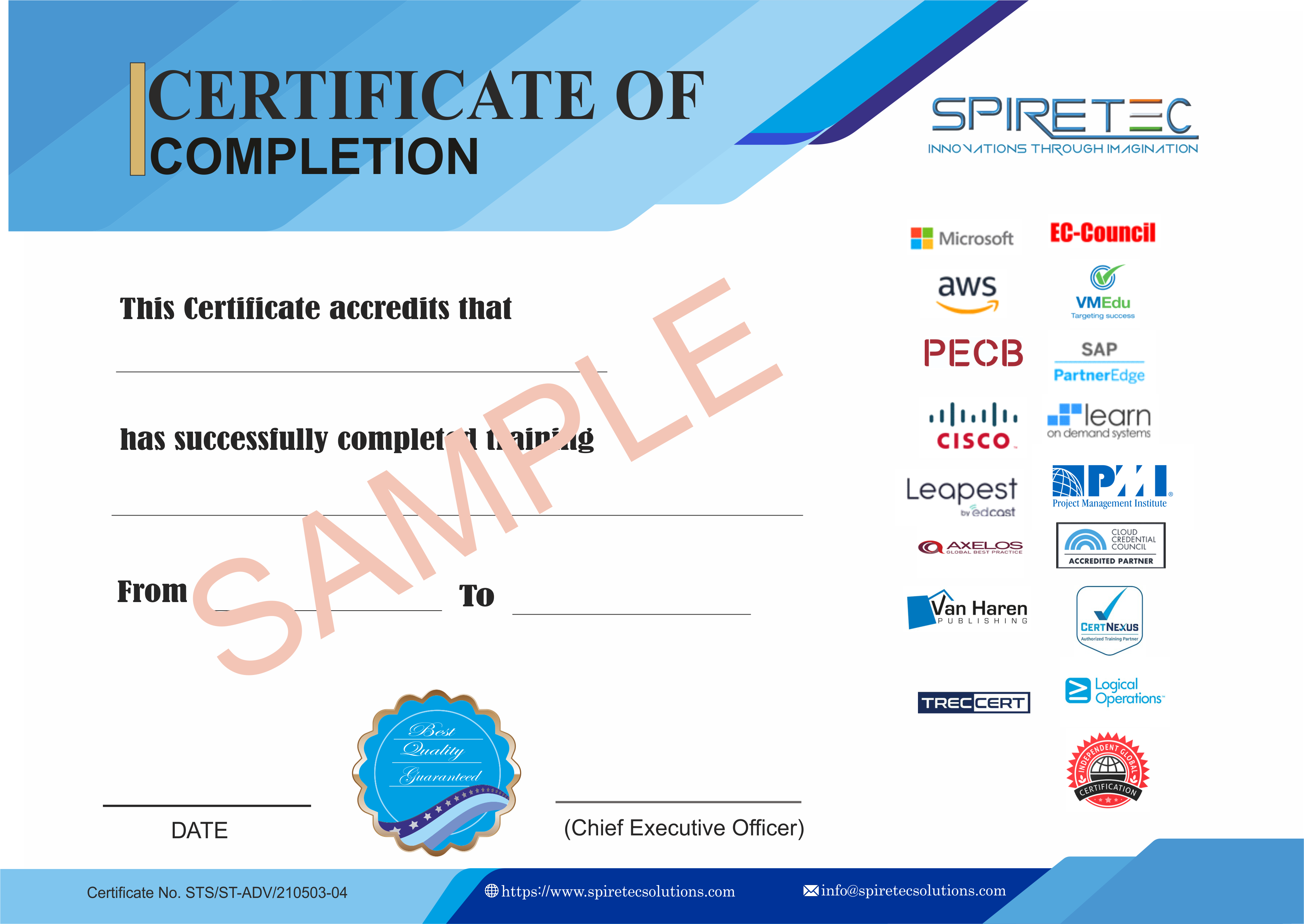PRINCE2 Agile® integrates the flexibility and responsiveness of Agile with the structured and controlled approach of PRINCE2®. This certification is designed to provide project managers with a versatile approach to managing projects in dynamic and rapidly changing environments.
Course Objectives
The PRINCE2 Agile® course aims to equip participants with:
-
An understanding of how to combine PRINCE2®'s structured approach with Agile's flexibility.
-
Skills to apply Agile techniques in a PRINCE2® environment to deliver projects efficiently and effectively.
-
Knowledge to tailor PRINCE2® processes and themes to Agile environments, ensuring that projects remain aligned with business objectives and deliver value.
Key Benefits
PRINCE2 Agile® helps organizations and individuals achieve:
-
Enhanced Project Delivery: By merging PRINCE2®’s robust framework with Agile’s adaptability, you can deliver projects more effectively and respond to changing requirements quickly.
-
Improved Collaboration: Encourages better collaboration between teams and stakeholders, promoting a more dynamic and responsive project environment.
-
Better Control: Retains PRINCE2®'s emphasis on control, governance, and strategic alignment, while incorporating Agile practices to enhance flexibility and responsiveness.
Course Content
The PRINCE2 Agile® course covers:
-
Introduction to PRINCE2 Agile®: Understanding the core principles of PRINCE2® and Agile, and how they integrate.
-
Agile Concepts: Key Agile concepts, frameworks, and techniques such as Scrum, Kanban, and Lean.
-
PRINCE2® Themes and Processes: How PRINCE2® themes and processes can be adapted for Agile projects.
-
Tailoring PRINCE2®: Strategies for tailoring PRINCE2® to fit Agile environments and project needs.
-
Agile Delivery: Methods for delivering value through iterative and incremental delivery.
Exam Details
The PRINCE2 Agile® certification involves passing an exam that tests your ability to apply Agile techniques within the PRINCE2® framework. The exam is available in multiple languages and includes both a Foundation and Practitioner level.
Why Earn PRINCE2 Agile® Now?
With organizations increasingly adopting Agile methodologies to enhance project delivery and adapt to change, having PRINCE2 Agile® certification can set you apart by demonstrating your ability to integrate Agile practices within a structured project management framework. This certification helps you:
-
Adapt to Change: Manage projects in fast-paced environments with greater flexibility.
-
Enhance Career Prospects: Position yourself as a versatile project manager with expertise in both PRINCE2® and Agile.
-
Drive Successful Projects: Leverage Agile techniques to improve project outcomes while maintaining control and alignment with business goals.
Who Should Attend?
PRINCE2 Agile® is ideal for:
-
Project Managers and Program Managers seeking to enhance their ability to manage projects using Agile practices.
-
Team Leaders and Agile Practitioners looking to integrate Agile techniques with PRINCE2®.
-
Organizations aiming to improve project delivery and adapt to changing requirements.
Course Outline
1. Understand key concepts relating to projects and PRINCE2
1.1 Recall the PRINCE2 principles:
-
Continued business justification
-
Learn from experience
-
Defined roles and responsibilities
-
Manage by stages
-
Manage by exception
-
Focus on products
-
Tailor to suit the project environment
1.2 Explain the purpose of the PRINCE2 themes:
-
Business case
-
Organization
-
Quality
-
Plans
-
Risk
-
Change
-
Progress
1.3 Explain the purpose of the PRINCE2 processes:
1.4 Explain the purpose of the following PRINCE2 management products:
1.5 Explain the responsibilities of the following PRINCE2 roles:
-
Project board
-
Executive
-
Senior user
-
Senior supplier
-
Project manager
-
Team manager
2. Understand key concepts relating to projects and PRINCE2 Agile
2.1 Explain how PRINCE2 Agile is used in a project context and explain the difference between projects and business as usual (BAU).
2.2 Recall which agile ways of working are suitable for use with PRINCE2 Agile:
-
Kanban
-
Lean startup
-
Scrum
2.3 Describe the need to ‘blend and weave’ PRINCE2 with agile at all levels of a project (project direction, project management and product delivery) including the eight guidance points.
2.4 Describe the roles, responsibilities and competencies of the PRINCE2 Agile delivery team:
3. Understand how PRINCE2 principles, themes, processes and management products are tailored and/or applied in an agile context
3.1 Explain how the PRINCE2 principles will be applied in an agile context:
-
Continued business justification
-
Learn from experience
-
Defined roles and responsibilities
-
Manage by stages
-
Manage by exception
-
Focus on products
-
Tailor to suit the project environment
3.2 Explain the PRINCE2 Agile behaviours:
-
Transparency
-
Collaboration
-
Rich communication
-
Self-organization
-
Exploration
3.3 Explain the PRINCE2 Agile guidance for each theme:
-
Business case
-
Organization
-
Quality
-
Plans
-
Risk
-
Change
-
Progress
3.4 Explain the PRINCE2 Agile guidance for each process:
3.5 Explain the PRINCE2 Agile guidance for tailoring the following PRINCE2 management products:
3.6 Explain what to fix and what to flex, including setting tolerances and the five targets:
-
Fix and flex tolerances
-
Be on time and hitting deadlines
-
Protect the level of quality
-
Embrace change
-
Keep teams stable
-
Accept that the customer doesn’t need everything
4. Understand the agile ways of working, key terms and techniques
4.1 Recall the definition of the following agile terms:
-
Backlog (sprint, release & product)
-
Benefit (value)
-
Epic
-
Information radiator
-
Spike
-
Stand-up meeting
-
Timebox (sprint, release)
-
Velocity
-
Waterfall methodology
4.2 Explain key Agile concepts and techniques:
-
Scrum
-
Lean Startup (including MVP)
-
Retrospectives
-
User stories (including definition of ‘ready’ and ‘done’)
-
Workshops
-
Burn charts
-
Agile Estimation (points and T-Shirt sizing)
-
Working Agreements
5. Understand the focus areas in an agile context
5.1 Explain the PRINCE2 Agile focus areas:
-
Agilometer
-
Requirements
-
Rich communication
-
Frequent releases







 Live Online Training (Duration : 24 Hours)
Live Online Training (Duration : 24 Hours)
